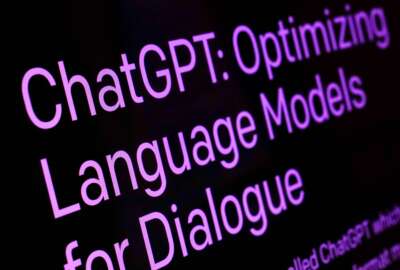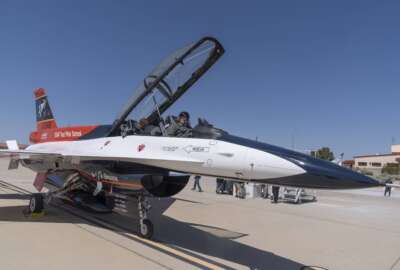Air Force’s new tool will track department’s AI initiatives, spending
"One of the things Congress has levied upon us is we must be able to have an AI inventory so we can report how much we're spending on AI," said Venice Goodwine.
The Department of the Air Force has a new platform designed to improve visibility and understanding of artificial intelligence initiatives across the service. Dubbed CLARA, the new tool aims to centralize information sharing, track progress and provide space for collaboration among all stakeholders on various AI-related projects.
“One of the things Congress has levied upon us is we must be able to have an AI inventory so we can report how much money we’re spending on AI. But more importantly, how are we tracking the time back on mission for our Airmen and Guardians? So Clara is a way in which we’re going to do that,” Venice Goodwine, the Air Force chief information officer, said during the Department of the Air Force Information Technology and Cyberpower event on Monday.
CLARA is available on the Air Force’s AI Exchange app store — a new centralized platform that provides easy access to all AI tools Airmen and Guardians can experiment with in a safe environment.
One of the applications available through the app store includes the recently released NIPRGPT — a ChatGPT-like tool that helps Airmen, Guardians, and civilian employees with a variety of tasks, such as coding and content summarization, all on the service’s unclassified networks. Released in June, this chatbot serves as a testing ground for the service to better understand practical applications of generative AI, run experiments, take note of problems and gather feedback.
In June, Chandra Donelson, the Air Force’s acting chief data and artificial intelligence officer, told reporters the service has yet to commit to any single model or tech vendor.
“It is too early in the process for that. However, we are leveraging this effort to inform future policy, acquisition and investment decisions,” said Donelson.
Goodwine said the Air Force Research Laboratory, which developed the tool, has enabled users to experiment with various large language models, including Meta’s Llama and Mistral AI. The service is currently working on incorporating a retrieval-augmented generation (RAG) model to use their internal data more effectively.
“There are different models. What we want to show you is which model is best for which use case. And so I encourage you, if you don’t have an account, get an account. But the key thing about NIPRGPT is that you can actually give us feedback because we need to know what works and what’s not working. We need to know your particular use cases,” said Goodwine.
“We had a use case already where there was a proposal evaluation and NIPRGPT was used to do the evaluation from a proposal. And that was exciting because of the time it saved.”
Airmen and Guardians also have access to redForce AI, a platform that brings together software developers, end users, machine learning developers and acquisition personnel to acquire AI capabilities.
All AI resources, including the AI exchange app store, are accessible through the DAF AI launch point. Established in April, the website provides access to training and policy resources, allows Airmen and Guardians to submit their AI use cases.
“It gives you your one-stop shop for everything we’re doing for AI. If you want to know how to be a prompt engineer, we’ve developed that. We’re changing every day to make sure we can utilize these tools,” said Goodwine.
Copyright © 2025 Federal News Network. All rights reserved. This website is not intended for users located within the European Economic Area.






